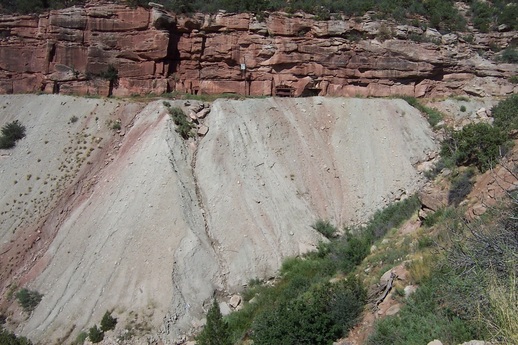
Uranium Mine Land Assessment: La Sal Creek Watershed Project
San Juan County, Utah & Montrose County, Colorado
Western Water & Land technically directed, and implemented the La Sal Creek Watershed project which was conducted on behalf of the U.S. Bureau of Land Management (BLM) to address human health and ecological risks associated with former operations at five abandoned uranium mine sites in eastern Utah and western Colorado. The U.S. Environmental Protection Agency (EPA) retained oversight authority for the project. The project required preparation of a detailed Site Safety and Health Plan (SSHP), Conceptual Site Model (CSM), Field Sampling Plan (FSP), and Quality Assurance Project Plan (QAPP). An archaeological study was completed to record historic and prehistoric features at the mine sites. Archaeological recordation included site file searches, literature reviews, historical research, and intensive pedestrian survey of the five mine sites. A comprehensive characterization program was performed to assess contaminant levels in surface water, soil, sediment, waste rock, vegetation, and groundwater from local domestic wells. All site work was conducted in accordance with the requirements and procedures specified at OSHA 1910.120. An EE/CA was prepared to document characterization and risk evaluation results; develop removal action goals and objectives; identify and analyze removal action alternatives based on effectiveness, implementability, and cost; and propose a recommended alternative based on a comparative analysis.
The CSM developed for the project provided a framework for identifying the likely contaminant source areas associated with each mine site and assessing the relationship between site-derived contaminants, exposure pathways, and potential human and ecological receptors. The information presented in the CSM was used to support identification of data gaps and design of additional data collection efforts, the spatial and temporal boundaries of the field investigation, and evaluation of potential risks to human health and the environment. The FSP and QAPP described the comprehensive characterization activities performed to assess the primary exposure pathways identified in the CSM and provided the information needed to assess human-health and ecological risks and complete development and analysis of potential removal action alternatives through implementation of the EE/CA process. The characterization effort included collection and analysis of abiotic samples (surface water, soil, sediment, and mine waste rock), biotic samples (benthic macroinvertebrates, irrigated crops, and garden produce), gamma-exposure surveys, radon monitoring at the mine sites and within the homes of nearby residents, and underground mine reconnaissance to assess mine water drainage sources and options for underground containment of mine water.
San Juan County, Utah & Montrose County, Colorado
Western Water & Land technically directed, and implemented the La Sal Creek Watershed project which was conducted on behalf of the U.S. Bureau of Land Management (BLM) to address human health and ecological risks associated with former operations at five abandoned uranium mine sites in eastern Utah and western Colorado. The U.S. Environmental Protection Agency (EPA) retained oversight authority for the project. The project required preparation of a detailed Site Safety and Health Plan (SSHP), Conceptual Site Model (CSM), Field Sampling Plan (FSP), and Quality Assurance Project Plan (QAPP). An archaeological study was completed to record historic and prehistoric features at the mine sites. Archaeological recordation included site file searches, literature reviews, historical research, and intensive pedestrian survey of the five mine sites. A comprehensive characterization program was performed to assess contaminant levels in surface water, soil, sediment, waste rock, vegetation, and groundwater from local domestic wells. All site work was conducted in accordance with the requirements and procedures specified at OSHA 1910.120. An EE/CA was prepared to document characterization and risk evaluation results; develop removal action goals and objectives; identify and analyze removal action alternatives based on effectiveness, implementability, and cost; and propose a recommended alternative based on a comparative analysis.
The CSM developed for the project provided a framework for identifying the likely contaminant source areas associated with each mine site and assessing the relationship between site-derived contaminants, exposure pathways, and potential human and ecological receptors. The information presented in the CSM was used to support identification of data gaps and design of additional data collection efforts, the spatial and temporal boundaries of the field investigation, and evaluation of potential risks to human health and the environment. The FSP and QAPP described the comprehensive characterization activities performed to assess the primary exposure pathways identified in the CSM and provided the information needed to assess human-health and ecological risks and complete development and analysis of potential removal action alternatives through implementation of the EE/CA process. The characterization effort included collection and analysis of abiotic samples (surface water, soil, sediment, and mine waste rock), biotic samples (benthic macroinvertebrates, irrigated crops, and garden produce), gamma-exposure surveys, radon monitoring at the mine sites and within the homes of nearby residents, and underground mine reconnaissance to assess mine water drainage sources and options for underground containment of mine water.
